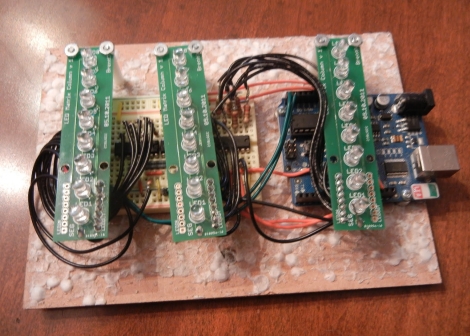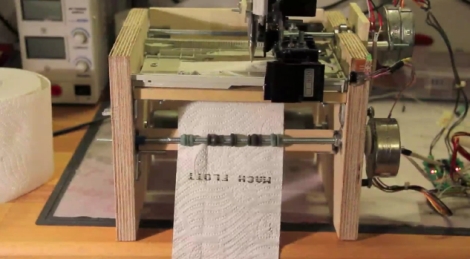
For most of the working world, the onset of autumn and winter in the Northern hemisphere means one thing – waking up well before the sun rises to get a start on the daily grind. [Brent] from Freeside Atlanta knows that routine well and decided to build himself a sunrise alarm clock in an attempt to wake himself more naturally on those dark mornings.
He bought an assortment of LEDs in varying colors including blue, red, yellow, and white, along with a few UV diodes for good measure. His goal with this array of LEDs was to simulate the natural colors of the sunrise, rather than simply slowly brightening the room. The clock uses a DS1307 RTC to keep the time, and an Arduino is tasked with lighting the LEDs about 25 minutes before it’s time for [Brent] to wake up.
He says that it seems to be working pretty well, gently waking his body before the clock radio kicks in. It certainly beats a loud buzzer!
















